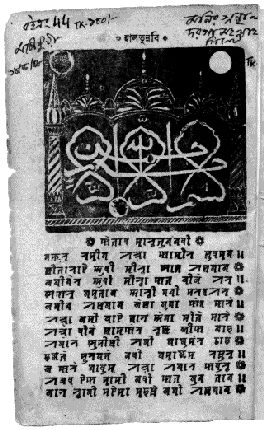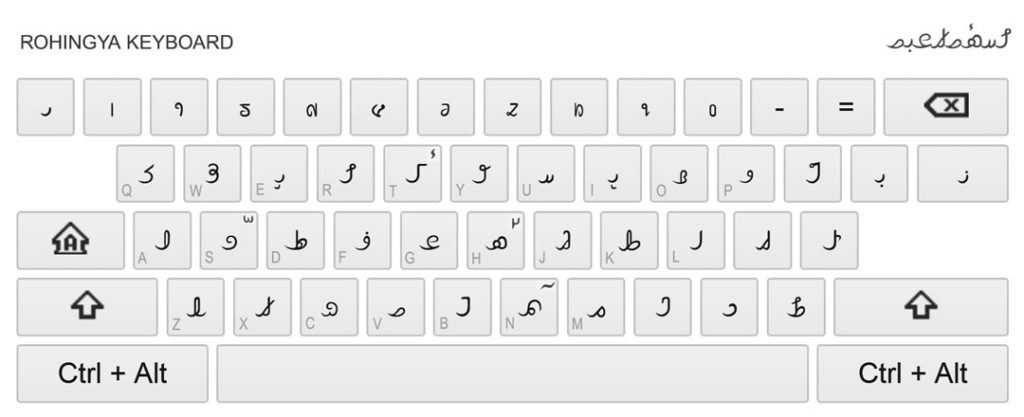|
Bengali–Assamese Languages
The Bengali–Assamese languages (also Gauda–Kamarupa languages) is a grouping of several languages. This group belongs to the Eastern zone of Indo-Aryan languages. The languages in this group as per Glottolog includes Assamese, Bengali, Bishnupriya, Chakma, Chittagonian, Hajong, Kharia Thar, Kurmukar, Lodhi (also categorised as a Munda language), Mal Paharia, Noakhailla, Rajbangshi, Rohingya, Sylheti, Tangchangya and Surjapuri. Languages Language comparison chart ''* = borrowed terms (including tatsamas, ardhatatsamas and other borrowings)'' ''* = borrowed terms (including tatsama Tatsama ( sa, तत्सम , lit. 'same as that') are Sanskrit loanwords in modern Indo-Aryan languages like Assamese, Bengali, Marathi, Nepali, Odia, Hindi, Gujarati, and Sinhala and in Dravidian languages like Malayalam and Telugu. They ...s, ardhatatsamas and other borrowings)'' Verbs References Bibliography * * {{DEFAULTSORT:Bengali-Assamese languages E ... [...More Info...] [...Related Items...] OR: [Wikipedia] [Google] [Baidu] |
Bangladesh
Bangladesh (}, ), officially the People's Republic of Bangladesh, is a country in South Asia. It is the eighth-most populous country in the world, with a population exceeding 165 million people in an area of . Bangladesh is among the most densely populated countries in the world, and shares land borders with India to the west, north, and east, and Myanmar to the southeast; to the south it has a coastline along the Bay of Bengal. It is narrowly separated from Bhutan and Nepal by the Siliguri Corridor; and from China by the Indian state of Sikkim in the north. Dhaka, the capital and largest city, is the nation's political, financial and cultural centre. Chittagong, the second-largest city, is the busiest port on the Bay of Bengal. The official language is Bengali, one of the easternmost branches of the Indo-European language family. Bangladesh forms the sovereign part of the historic and ethnolinguistic region of Bengal, which was divided during the Partition of India in ... [...More Info...] [...Related Items...] OR: [Wikipedia] [Google] [Baidu] |
Bengali Alphabet
The Bengali script or Bangla alphabet ( bn, বাংলা বর্ণমালা, ''Bangla bôrṇômala'') is the alphabet used to write the Bengali language based on the Bengali-Assamese script, and has historically been used to write Sanskrit within Bengal. It is one of the most widely adopted writing systems in the world (used by over 265 million people). From a classificatory point of view, the Bengali writing system is an abugida, i.e. its vowel graphemes are mainly realised not as independent letters, but as diacritics modifying the vowel inherent in the base letter they are added to. The Bengali writing system is written from left to right and uses a single letter case, which makes it a unicameral script, as opposed to a bicameral one like the Latin script. It is recognisable, as are some other Brahmic scripts, by a distinctive horizontal line known as a '' mātrā'' () running along the tops of the letters that links them together. The Bengali writing sys ... [...More Info...] [...Related Items...] OR: [Wikipedia] [Google] [Baidu] |
Assam
Assam (; ) is a state in northeastern India, south of the eastern Himalayas along the Brahmaputra and Barak River valleys. Assam covers an area of . The state is bordered by Bhutan and Arunachal Pradesh to the north; Nagaland and Manipur to the east; Meghalaya, Tripura, Mizoram and Bangladesh to the south; and West Bengal to the west via the Siliguri Corridor, a wide strip of land that connects the state to the rest of India. Assamese and Boro are the official languages of Assam, while Bengali is an additional official language in the Barak Valley. Assam is known for Assam tea and Assam silk. The state was the first site for oil drilling in Asia. Assam is home to the one-horned Indian rhinoceros, along with the wild water buffalo, pygmy hog, tiger and various species of Asiatic birds, and provides one of the last wild habitats for the Asian elephant. The Assamese economy is aided by wildlife tourism to Kaziranga National Park and Manas National Park, which are ... [...More Info...] [...Related Items...] OR: [Wikipedia] [Google] [Baidu] |
Assamese Alphabet
The Assamese alphabet ( as, অসমীয়া বৰ্ণমালা, ''Oxomiya bornomala'') is a writing system of the Assamese language and is a part of the Bengali-Assamese script. This script was also used in Assam and nearby regions for Sanskrit as well as other languages such as Bodo (now Devanagari), Khasi (now Roman), Mising (now Roman), Jaintia (now Roman) etc. It evolved from Kamarupi script. The current form of the script has seen continuous development from the 5th-century Umachal/ Nagajari-Khanikargaon rock inscriptions written in an eastern variety of the Gupta script, adopting significant traits from the Siddhaṃ script in the 7th century. By the 17th century three styles of Assamese alphabets could be identified (''baminiya'', ''kaitheli'' and ''garhgaya'') that converged to the standard script following typesetting required for printing. The present standard is identical to the Bengali alphabet except for two letters, (ro) and (vo); and the let ... [...More Info...] [...Related Items...] OR: [Wikipedia] [Google] [Baidu] |
Bengali–Assamese Script
The Bengali–Assamese script (or Eastern Nagari script) is a modern eastern Indic script that emerged from the Brahmi script. Gaudi script is considered the ancestor of the script. It is known as ''Bengali script'' among Bengali speakers, as ''Assamese script'' among Assamese speakers, and ''Eastern Nagari'' is used in academic discourses. Besides Bengali language, Bengali and Assamese language, Assamese it is used to write Bishnupriya Manipuri language, Bishnupriya Manipuri, Chakma language, Chakma, Meitei language, Meitei (Manipuri), Santali language, Santali and other languages—historically, it was used for old and middle Indo-Aryan and it is still used for Sanskrit. Other languages, such as Bodo language, Bodo, Karbi language, Karbi, Maithili language, Maithili and Mishing language, Mising were once written in this script. The two major alphabets in this script – Assamese alphabet, Assamese and Bengali alphabet, Bengali – are virtually identical, except ... [...More Info...] [...Related Items...] OR: [Wikipedia] [Google] [Baidu] |
Surjapuri Language
Surjapuri is an Eastern Indo-Aryan language spoken in Eastern India including North Bengal, West Bengal, and Banganchal of Eastern Bihar, as well as in Nepal. Among speakers in some regions, it is known as 'Deshi Bhasa'. It possesses similarities with Kamatapuri, Assamese, Bengali, and Maithili. Geographical distribution Surjapuri is mainly spoken of Surjapuri Bengali in the parts of Purnia division (Kishanganj, Katihar, Purnia, and Araria districts) of Bihar. It is also spoken in West Bengal (Uttar Dinajpur and Dakshin Dinajpur districts, and in North Malda of Malda district, specially in Harishchandrapur and Chanchal area and Siliguri city of Darjeeling district – part of the North Bengal region within the Jalpaiguri division), Bangladesh (Thakurgaon District) as well as in parts of eastern Nepal. Related languages Surjapuri is associated with the Kamtapuri language (and its dialects Rangpuri and Koch Rajbangshi) spoken in North Bengal and Western Assam, as well as with ... [...More Info...] [...Related Items...] OR: [Wikipedia] [Google] [Baidu] |
Tangchangya Language
The Tanchangya language is one of the eleven indigenous languages in Chittagong Hill Tracts in present-day Bangladesh, and an ethnic group in the Indian states of Tripura and Mizoram, as well as Rakhine State in Myanmar. It is categorized as an Indo-Aryan language, despite some scholars having the opinion of it being Tibeto-Burman language.Rupak-Debnath (2008): 167 It is closely related to Chakma and Chittagonian. Vocabulary Tanchangya language is rooted in Indo-Aryan languages, with mixture of Pali, Sanskrit, Prakrit The Prakrits (; sa, prākṛta; psu, 𑀧𑀸𑀉𑀤, ; pka, ) are a group of vernacular Middle Indo-Aryan languages that were used in the Indian subcontinent from around the 3rd century BCE to the 8th century CE. The term Prakrit is usu ... and other middle-Indo-Aryan languages. Ancient Tanchangya language Ancient Tanchangya's words are believed to be the original words of Tanchangya since those words have been handing down a long time ago. It is not ... [...More Info...] [...Related Items...] OR: [Wikipedia] [Google] [Baidu] |
Sylheti Language
Sylheti ( Sylheti Nāgarī: ; bn, সিলেটি ) is an Indo-Aryan language spoken by an estimated 11 million people, primarily in the Sylhet Division of Bangladesh and in parts of Northeast India."Sylheti is an Indo-Aryan language spoken by about 11 million people in India and Bangladesh (Hammarström et al., 2017). Sylheti is an Eastern Indo-Aryan language, primarily spoken in the Sylhet division of Bangladesh, and in Barak valley, in Assam of the India and in the northern parts of the state of Tripura in India." Besides, there are substantial numbers of Sylheti speakers within diaspora communities in the United Kingdom, the United States, Canada and the Middle East. It is variously perceived as either a dialect of Bengali or a language in its own right. While most linguists consider it an independent language,"Along the linguistic continuum of eastern Indic languages, Sylheti occupies an ambiguous position, where it is considered a distinct language by many and also ... [...More Info...] [...Related Items...] OR: [Wikipedia] [Google] [Baidu] |
Rohingya Language
Rohingya (), also known as Ruáingga ( Hanifi Rohingya: ; ), is an Indo-Aryan language spoken by the Rohingya people of Rakhine State, Myanmar. It is an Eastern Indo-Aryan language belonging to the Bengali–Assamese branch, and is closely related to the Chittagonian language spoken in neighbouring Bangladesh. The Rohingya and Chittagonian languages have a high degree of mutual intelligibility. Phonology Consonants Rohingya has primarily the following 25 native consonant phonemes. There are some other consonant phonemes which are from foreign languages such as Arabic, Bengali, Burmese and Urdu. * A dental fricative �may also be heard in words of Arabic origin. * is only used in words of foreign origin. * /n/ is heard as �when preceding /ʈ, ɖ/. *Allophones of /k, ɡ/ can be heard as , ɟ Vowels * Short allophones of /e, a/ are heard as �, æ �, ə Allophones of /i, u/ are heard as �, ʊ There are six vowels and several diphthongs in the Rohingya langu ... [...More Info...] [...Related Items...] OR: [Wikipedia] [Google] [Baidu] |
Rangpuri Language
Rangpuri is an eastern Indo-Aryan language of the Bengali-Assamese branch, spoken in northern West Bengal, western Goalpara of Assam in India and Rangpur Division in Bangladesh. Many are bilingual in Bengali Bengali or Bengalee, or Bengalese may refer to: *something of, from, or related to Bengal, a large region in South Asia * Bengalis, an ethnic and linguistic group of the region * Bengali language, the language they speak ** Bengali alphabet, the w ... and Assamese in their respective regions. According to Glottolog, it forms the Central-Eastern Kamta group with the Kamta language. Together with Rajbanshi and Surjapuri they form the Kamta group of languages. Names Rangpuri goes by numerous names, the most common being ''Bahe'';"Rangpuri: This term is favoured in the Rangpur area, interchangeably with ‘Bahe.’ Chaudhuri (1939) prefers to use Rangpuri to Rajbanshi, as it avoids the problem of being caste-centric." H though ''Deshi bhasha'' and ''Anchalit bhasha'' ... [...More Info...] [...Related Items...] OR: [Wikipedia] [Google] [Baidu] |
Noakhailla
Noakhailla (), also known by the exonym Noakhalian, is a dialect of Bengali, spoken by an estimated 7 million people, primarily in the Greater Noakhali region of Bangladesh as well as southern parts of Tripura in India. Outside of these regions, there are substantial numbers of Noakhailla speakers in other parts of Bangladesh; as well as diaspora communities in the Middle East, Italy, Europe and the United States. Though it is considered a Bengali dialect, some have labelled it as ''undecipherable'' to speakers of Standard Bengali and that it has a "''vague''" relationship with it. Noakhailla dialect has no presence in formal settings, neither in Bangladesh nor India, though its standardisation has been prospected. There is a post-modernist demand of the Noakhali Division due to the old history, tradition and culture of Noakhali (currently a district of Chittagong Division) Bangladesh by Noakhailla activists. The movement has gained disrepute and commonly been the subject of meme ... [...More Info...] [...Related Items...] OR: [Wikipedia] [Google] [Baidu] |





